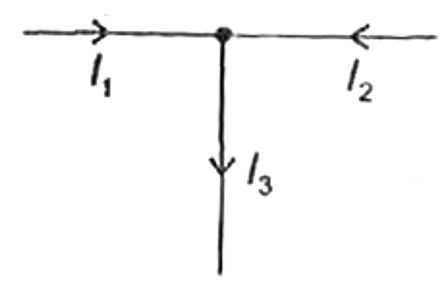Out of given four waves (1),(2),(3) and (4)
y=asin(kx+ωt) ..(1)
y=asin(ωt−kx) ..(2)
y=acos(kx+ωt) ..(3)
y=acos(ωt−kx) ..(4)
emitted by four different source S1,S2,S3 and S4 respectively, interference phenomena would be observed in space under appropriate conditions when
Source S1 emits wave (1) and S2 emits wave (2)
Source S3 emits wave (3) and S4 emits wave (4)
Source S2 emits wave (2) and S4 emits wave (4)
S4 emits waves (4) and S3 emits waves (3)
The correct Answer is:C
For interference, two waves must have a constant phase relationship Equation 1 and 3 and 2 and 4 have a constant phase relationship of π2 out of two choices. Only one S2 emitting 2 and S4 emitting 4 is given so only (c ) option is correct.
Topper's Solved these Questions
- BOOK - A2ZCHAPTER - WAVES AND ACOUSTICSEXERCISE - Beats20videos
WAVES AND ACOUSTICS
- BOOK - A2ZCHAPTER - WAVES AND ACOUSTICSEXERCISE - Stationary Waves20videos
WAVES AND ACOUSTICS
- BOOK - A2ZCHAPTER - WAVES AND ACOUSTICSEXERCISE - Equation And Energy Of Progressive Wave16videos
WAVES AND ACOUSTICS
- BOOK - A2ZCHAPTER - VECTORSEXERCISE - Chapter Test29videos
VECTORS
- BOOK - A2ZCHAPTER - WORK, ENERGY, POWER AND COLLISIONEXERCISE - Chapter Test29videos
WORK, ENERGY, POWER AND COLLISION
Similar Questions
Knowledge Check
- Question 1 - Select One or More
Two waves y1=asin(ωt−kx) and y2=acos(ωt−kx) superimpose at a point :
AThe resultant amplitude is √2aBIf l is the intensity of each source then Imax=2lCThe resultant wave leads y1 by a phase angle of π4DData insufficient to arrive at options (B) and ("C") - Question 2 - Select One
Three waves y1,y2,y3 are given by y1=Asin(Kx−ωt),y2A=sin(Kx+ωt)andy3=Asin(Ky−ωt). Which one of the following represents wave ?
Ay1+y2+y3By1+y3Cy1+y2Dy2+y3 - Question 3 - Select One
Which two of the given transverse waves will give stationary waves then get superimposed?
z1=acos(kx−ωt) .(A)
z2=acos(kx−ωt) .(B)
z3=acos(ky−ωt) .(C )AAandBBAandCCBandCDany two
Two waves are given byy1=asin(ωt−kx) and y2=acos(ωt−kx). The phase difference between the two waves is
View SolutionWhich two of the following waves are in the same phase?
y=Asin(kx−ωt)
y=Asin(kx−ωt+π)
y=Asin(kx−ωt+π/2)
y=Asin(kx−ωt+2π)View SolutionThe phase difference between the waves y=acos(ωt+kx)andy=asin(ωt+kx+π2) is
View SolutionTwo waves are given by y1=asin(ωt−kx) and y2=acos(ωt−kx). The phase difference between the two waves is -
View SolutionTwo waves of equation
y1=acos(ωt+kx)andy2=acos(ωt−kx) are superimposed upon each other. They will produceView Solution


